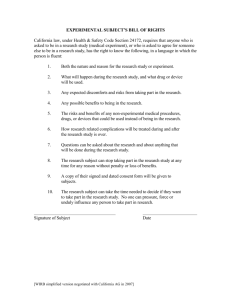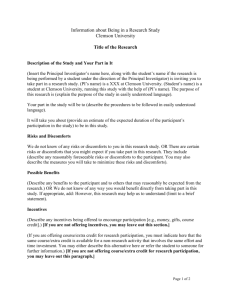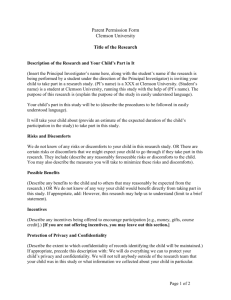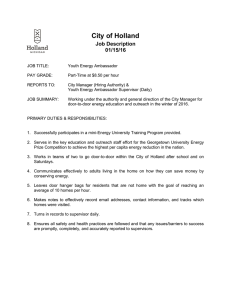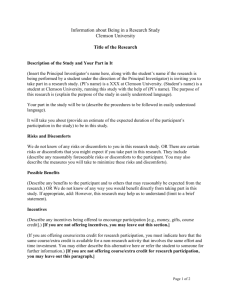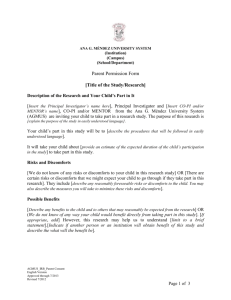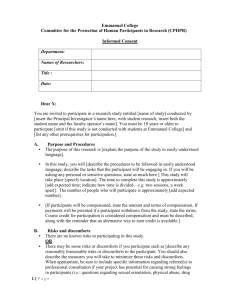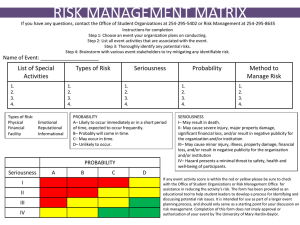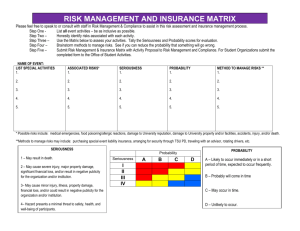Department for Human Research Protections
advertisement
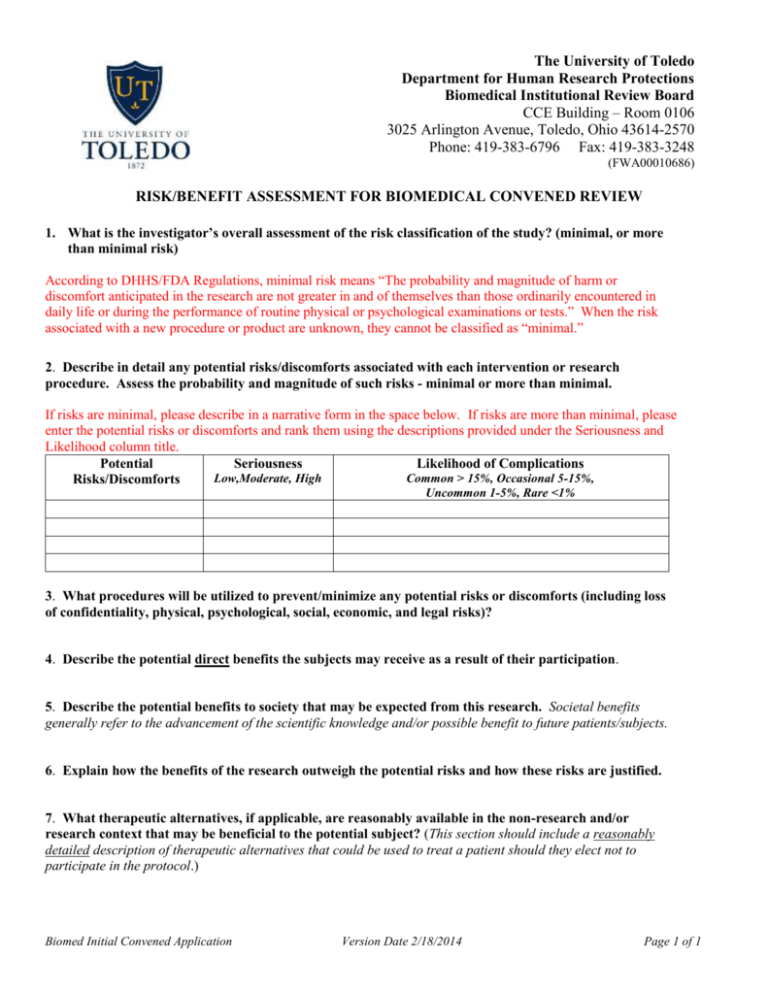
The University of Toledo Department for Human Research Protections Biomedical Institutional Review Board CCE Building – Room 0106 3025 Arlington Avenue, Toledo, Ohio 43614-2570 Phone: 419-383-6796 Fax: 419-383-3248 (FWA00010686) RISK/BENEFIT ASSESSMENT FOR BIOMEDICAL CONVENED REVIEW 1. What is the investigator’s overall assessment of the risk classification of the study? (minimal, or more than minimal risk) According to DHHS/FDA Regulations, minimal risk means “The probability and magnitude of harm or discomfort anticipated in the research are not greater in and of themselves than those ordinarily encountered in daily life or during the performance of routine physical or psychological examinations or tests.” When the risk associated with a new procedure or product are unknown, they cannot be classified as “minimal.” 2. Describe in detail any potential risks/discomforts associated with each intervention or research procedure. Assess the probability and magnitude of such risks - minimal or more than minimal. If risks are minimal, please describe in a narrative form in the space below. If risks are more than minimal, please enter the potential risks or discomforts and rank them using the descriptions provided under the Seriousness and Likelihood column title. Potential Seriousness Likelihood of Complications Low,Moderate, High Common > 15%, Occasional 5-15%, Risks/Discomforts Uncommon 1-5%, Rare <1% 3. What procedures will be utilized to prevent/minimize any potential risks or discomforts (including loss of confidentiality, physical, psychological, social, economic, and legal risks)? 4. Describe the potential direct benefits the subjects may receive as a result of their participation. 5. Describe the potential benefits to society that may be expected from this research. Societal benefits generally refer to the advancement of the scientific knowledge and/or possible benefit to future patients/subjects. 6. Explain how the benefits of the research outweigh the potential risks and how these risks are justified. 7. What therapeutic alternatives, if applicable, are reasonably available in the non-research and/or research context that may be beneficial to the potential subject? (This section should include a reasonably detailed description of therapeutic alternatives that could be used to treat a patient should they elect not to participate in the protocol.) Biomed Initial Convened Application Version Date 2/18/2014 Page 1 of 1
